How Burberry reclaimed its brand by selling luxury, content and a piece of history
Listen to the Story
As a silent activist of simple design, I always thought of the beige Burberry trench as the perfect apparel piece. Luxury brand Burberry’s Weekend fragrance also happened to be my first bottle of ‘grown-up’ perfume as a teenager, which I loved and used sparingly, for special occasions. Passing the Burberry HQ on my way to work often lifts up my spirits. Maybe it’s just about being in proximity to an icon.
The first time I was convinced of Burberry as an innovator was after noticing its video ads. Take a look at this one, wouldn’t you want this to be a full length movie?
Burberry’s charm was a result of the most intensive business, brand, product, and marketing strategy overhaul in luxury.
Burberry was on the brink of being forgotten in 2005, with a growth rate of just 2% per year in a booming luxury market. The genericness of its products put off the cult following. They were even designed in different studios worldwide for each market due to a wide licensing model. The trademark Nova check was being used on everything from hats to dog accessories(!) and became associated with ‘low culture’ in Europe. Knocking off the check was not too difficult either.
In 2006, newly appointed CEO, American executive Angela Ahrendts oversaw a complete transformation of Burberry using the right set of business and marketing strategies. Within six years, Burberry doubled its revenue (despite a financial crisis).
Hint? Some inspiration from technology companies like Apple and Google. Let’s dig deeper.
Mục lục
A recap – why should you read on?
Founded by 21-year-old Thomas Burberry in 1856, the iconic British luxury brand came from humble beginnings in making outdoor attire from Basingstoke in England.
Burberry is credited with inventing gabardine in 1879, a water-resistant yet sturdy fabric, which has since been immortalized in ‘the trench coat’.
According to Wikipedia, “the trench coat was born during the First World War due to it being worn by British officers in the trenches.”
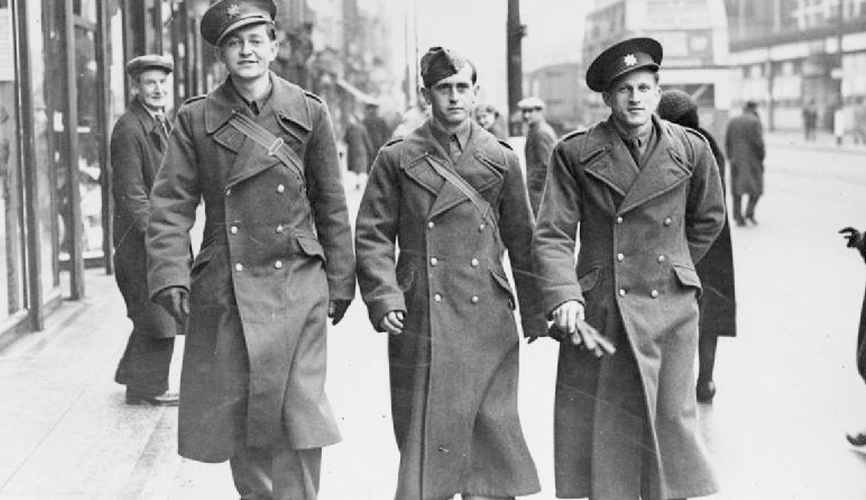 British soldiers in Burberry trench coats during WWI
British soldiers in Burberry trench coats during WWI
From the 1920s to the sixties, Burberry dressed explorers on expeditions, the well off and movie stars in its outdoor attire.
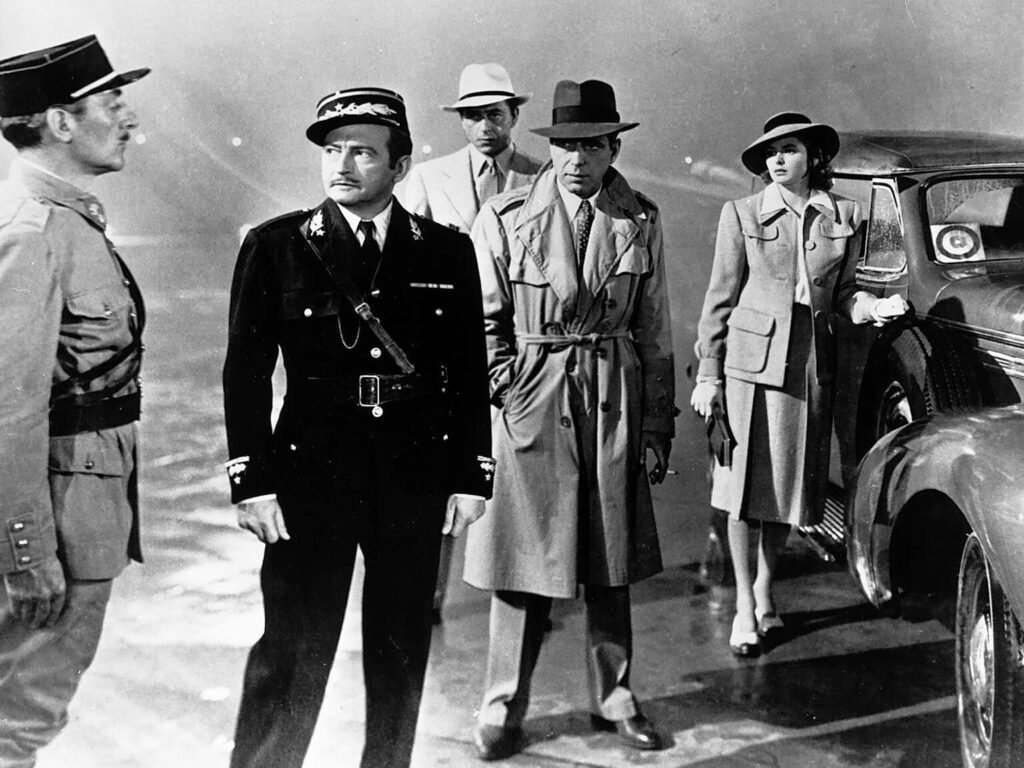 Burberry in the all-time classic film, Casablanca
Burberry in the all-time classic film, Casablanca
From the 70s to the 90s, the brand grew fast, with expanding lines to suits, trousers, shirts, sportswear, accessories, for men, ladies, and children.
Today, the Burberry trench coat is a timeless must-have; from New York to New Delhi.
How did Burberry turn its fate around in the mid-2000s? Lessons learnt:
Making the Burberry experience consistent
Ahrendts made the first change by centralizing the design process. In a Harvard Business Review article, she recalls going around the US, UK, and Hong Kong to see what the design teams created and what the stores looked like.
As part of its rejuvenated business strategy, Burberry’s each store had a completely different layout, price bracket, style, and range of products. The American market was getting classic British trench coats with a ‘Made in the U.S.A.” label, sold at half price compared to Europe. In Hong Kong, the collection was shirts with checks, no trench coat in sight.
From Apple to Starbucks, I love the consistency—knowing that anywhere in the world you can depend on having the same experience in the store or being served a latte with the same taste and in the same cup. That’s great branding.
Angela Ahrendts, CEO of Burberry (2006-2014)
To gain back its stature, Christopher Bailey was appointed as the Creative Director in 2004. Later in 2006, anything that the customer saw would have to pass through his office in the London headquarters. All weaving of the gabardine fabric and manufacturing of heritage trench coats was moved to the U.K.
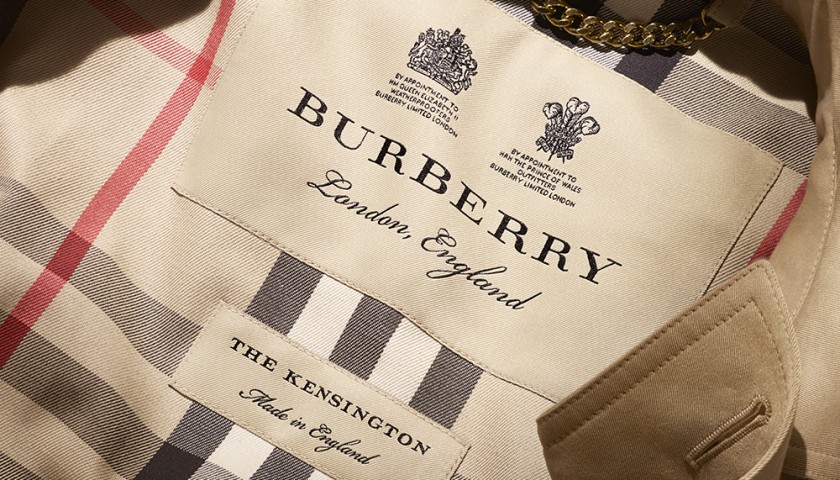 Burberry label
Burberry label
From then on, Bailey went on to oversee products that represented Burberry’s new, fresh face with colors and patterns to match.
Kill your darlings
Burberry’s overseen, overused check was the brand’s trademark but it needed to go. Since it was on almost everything and was cheaply available, it came to be associated with lower class Brits. You could see it on kilts, dog leashes, ties, scarves, and many products that don’t warrant a triple dollar price.
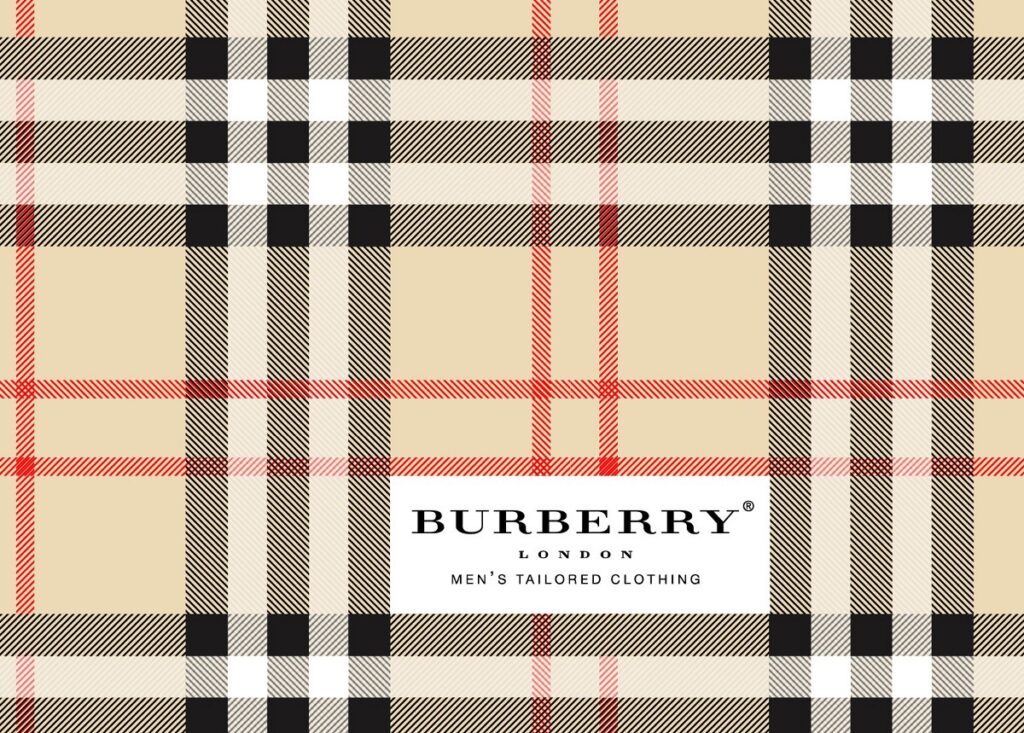 The Burberry check
The Burberry check
It’s no surprise. The ultimate nightmare for any luxury brand is to become ‘mass’ and widely available. Would you dream of owning a Rolex if the bracelet band was separately available to buy for $30? Probably not. Do Check out “What brand strategy of Rolex ensured its success?“
In the mid-2000s, the brand removed the use of the trademark check from all its products except just 10% and regained its exclusivity.
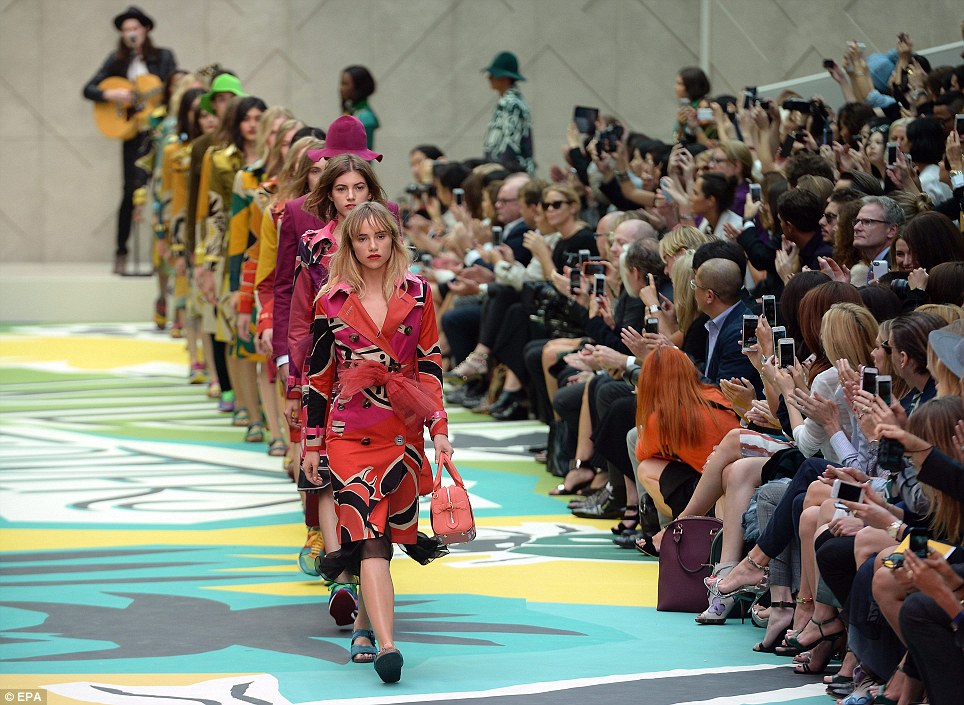 Burberry adapting to trends
Burberry adapting to trends
Take risks, target millennials and embrace digital
Even though the commission would be much better than selling shirts, the sales teams were clueless on how to sell a $1000 luxury coat.
With videos to demonstrate Burberry craftsmanship, the sales team became equipped with iPads and were educated on the brand. To show this content the stores were given audiovisual technology.
Burberry understood what made millennials tick and went after them while their competitors dismissed the generation altogether.
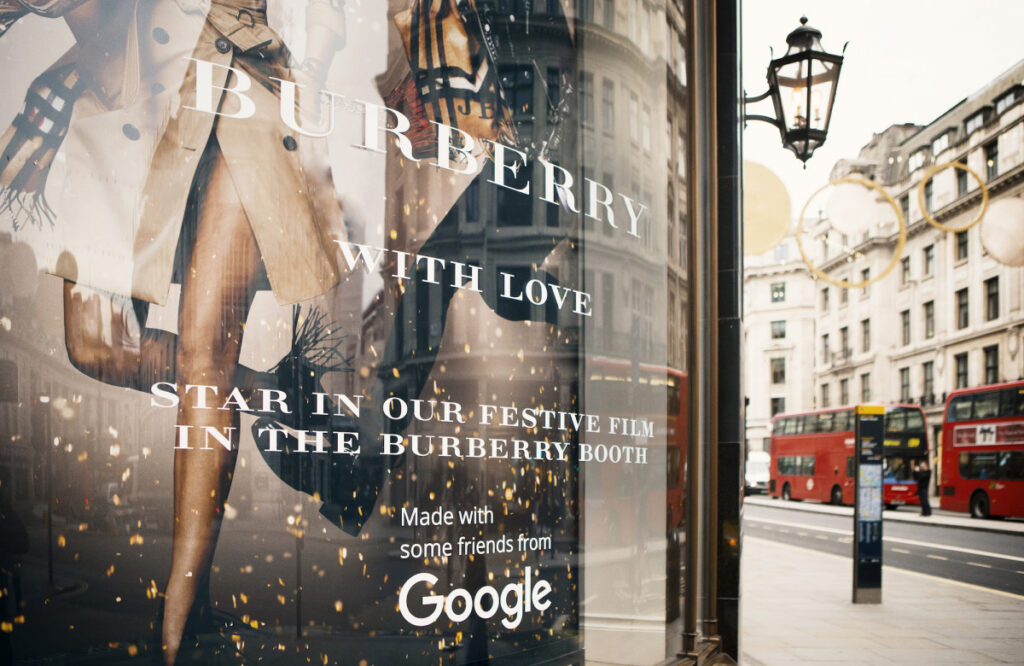 Burberry partners up with Google: Credit – Burberry
Burberry partners up with Google: Credit – Burberry
Online, Burberry was one of the first luxury players to create a single website that showcased the brand’s offerings with movies, music, and storytelling. The brand also partnered with Google for an interactive campaign. It used digital shows and virtual experiences to capture the visitors’ attention.
The content strategy connected to its new customers. More people visit the Burberry platform in a week than all of its global stores combined.
Tell a story
When you buy a luxury product, you don’t just buy it for its intended use. You buy it for its history, heritage, and quality.
The Chanel 2.55 bag is the perfect example of this.
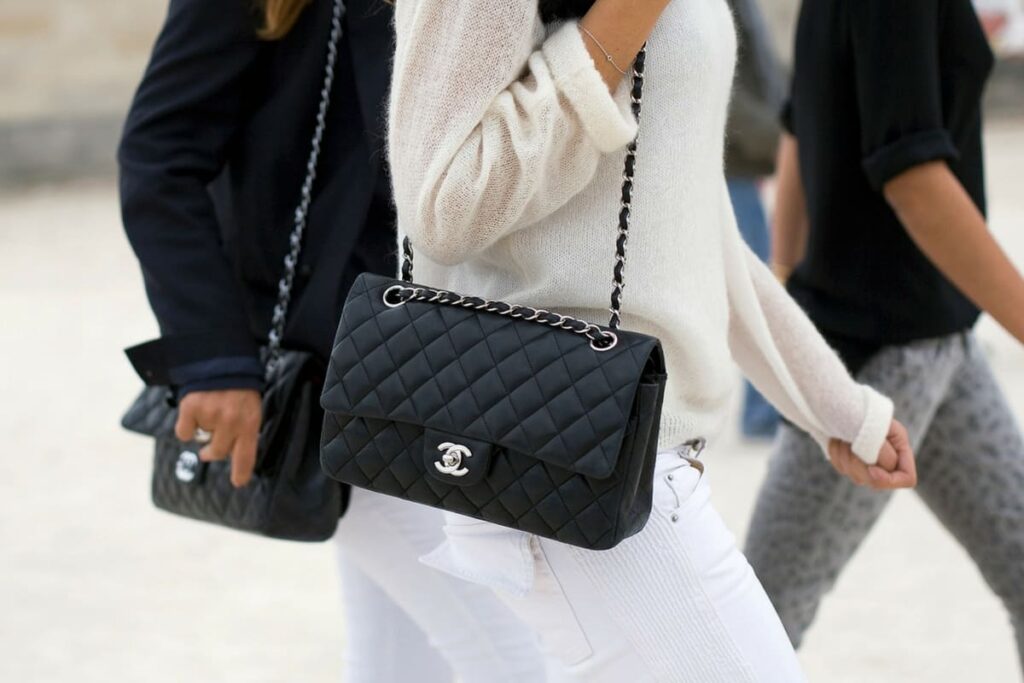 Chanel 2.55 quilted bag: Credit MVC Magazine
Chanel 2.55 quilted bag: Credit MVC Magazine
Career women all over the world want to own the 2.55 quilted Chanel shoulder bag. Why’s that? Coco Chanel was the first to create a luxury bag that rested on the shoulder rather than carried in the hand. The bag isn’t just practical, it represents the freedom of women as they entered the workplace. That’s why the bag costs upwards of $4000 today. You pay a premium for the story. Building a legacy: Chanel’s Luxury Marketing Strategy
By reinforcing its place in the luxury world as a true British heritage brand, Burberry regained its prominence. It represented brave officers going to the frontiers in World War I. It was the brand that dressed explorer Roald Amundsen on his journey to becoming the first man to reach the South Pole. When A. E. Clouston and Betty Kirby-Green broke the world record for the fastest return flight from London to Cape Town, it was in a sponsored airplane named ‘The Burberry’.
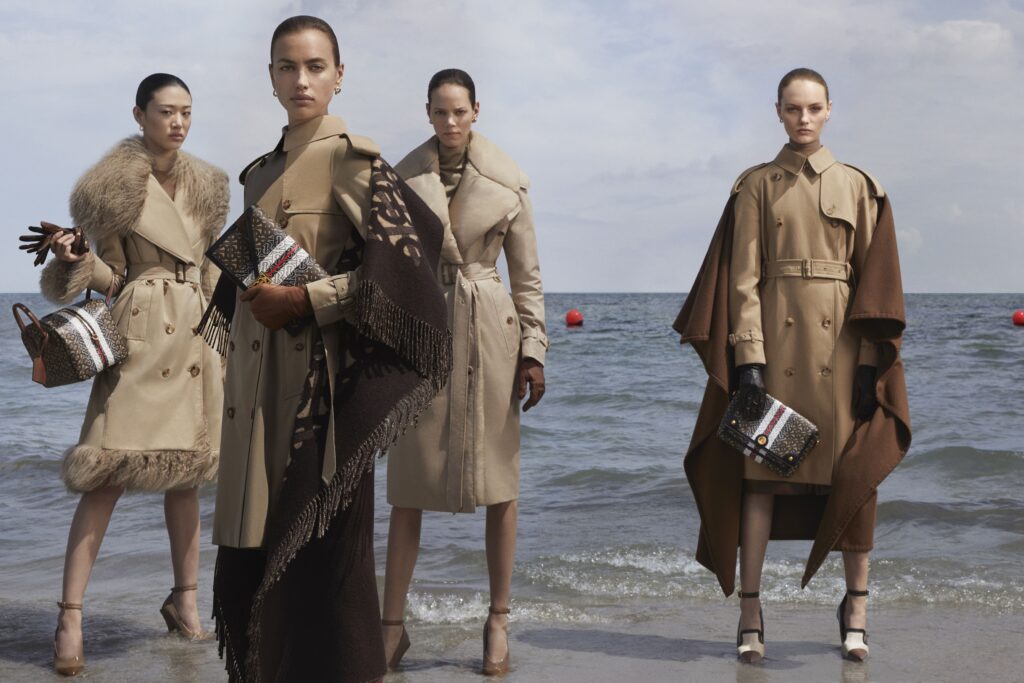 Burberry Autumn/Winter 2019 campaign: Credit Burberry/Danko Steiner
Burberry Autumn/Winter 2019 campaign: Credit Burberry/Danko Steiner
With time, the trench coat became the core product again. It currently exists in over 300 styles in a plethora of colors, materials, and silhouettes. Burberry routinely hosts grand fashion shows often with live music by British musicians and a full-blown orchestra.
Fun fact: Burberry is known for only using British models in its campaigns.
The brand went on to attain 60% of its revenue from apparel where outerwear contributed to half of that by 2012.
Let’s wrap this around
Burberry is a luxury brand, but the lessons in marketing & business strategy its overhaul brought could be applied to any brand looking to innovate in its space. The brand opened 132 stores in a short time span by identifying markets with this question: is this a city where two competitors exist already? If yes, it was a good incentive to set up shop. In 2016, 77% of sales came from its own stores.
When luxury giants were shying away from becoming ‘too accessible’ via tech, Burberry grew by rethinking its branding and taking strides in digital. The once cliché brand is now commonly referred to as “the innovator”. And it’s arguably the only British heritage brand known worldwide.
Burberry is now as much a media-content company as we are a design company.
Christopher Bailey, Chief Creative Officer (2009 – 2014), CEO (2014 – 2017), Burberry
Also, check out our most loved stories below

Why did Michelin, a tire company, decide to rate restaurants?
Is ‘Michelin Star’ by the same Michelin that sells tires, yes, it is! But Why? How a tire company evaluations became most coveted in the culinary industry?

Johnnie Walker – The legend that keeps walking!
Johnnie Walker is a 200 years old brand but it is still going strong with its marketing strategies and bold attitude to challenge the conventional norms.

Starbucks prices products on value not cost. Why?
In value-based pricing, products are price based on the perceived value instead of cost. Starbucks has mastered the art of value-based pricing. How?

Nike doesn’t sell shoes. It sells an idea!!
Nike has built one of the most powerful brands in the world through its benefit based marketing strategy. What is this strategy and how Nike has used it?

Domino’s is not a pizza delivery company. What is it then?
How one step towards digital transformation completely changed the brand perception of Domino’s from a pizza delivery company to a technology company?

BlackRock, the story of the world’s largest shadow bank
BlackRock has $7.9 trillion worth of Asset Under Management which is equal to 91 sovereign wealth funds managed. What made it unknown but a massive banker?

Why does Tesla’s Zero Dollar Budget Marketing Strategy work?
Touted as the most valuable car company in the world, Tesla firmly sticks to its zero dollar marketing. Then what is Tesla’s marketing strategy?
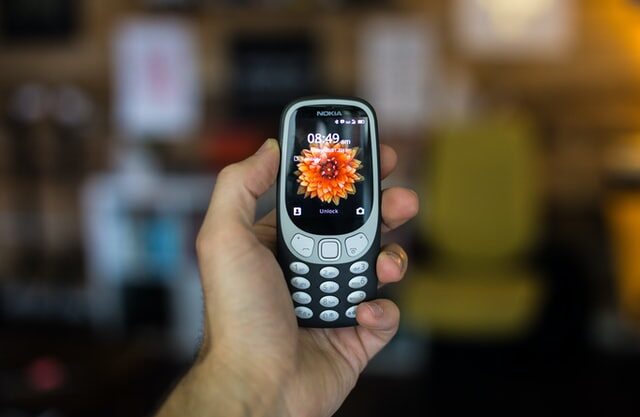
The Nokia Saga – Rise, Fall and Return
Nokia is a perfect case study of a business that once invincible but failed to maintain leadership as it did not innovate as fast as its competitors did!

Yahoo! The story of strategic mistakes
Yahoo’s story or case study is full of strategic mistakes. From wrong to missed acquisitions, wrong CEOs, the list is endless. No matter how great the product was!!

Apple – A Unique Take on Social Media Strategy
Apple’s social media strategy is extremely unusual. In this piece, we connect Apple’s unique and successful take on social media to its core values.






